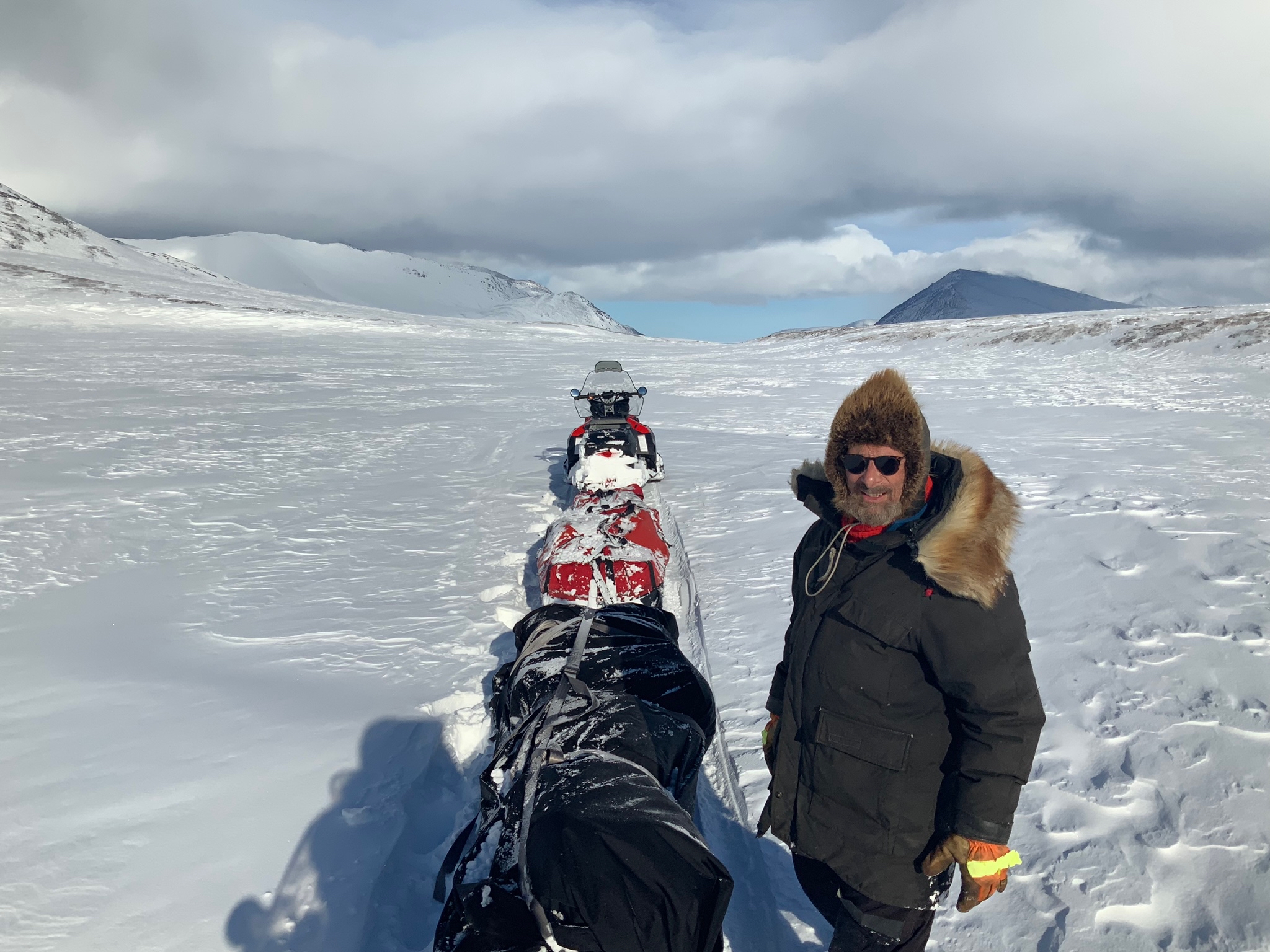A new field guide from an Alaska researcher explains the science — and importance — of snow
Matthew Sturm put the knowledge gained over a three-decade career researching snow in Alaska into his new book.

Matthew Sturm might be considered an Alaska guru of snow.
During his three-decade career in the Fairbanks area, he has analyzed Alaska and Arctic snow characteristics for 27 years for the U.S. Army’s Cold Regions Research and Engineering Laboratory and is now doing the same for the University of Alaska Fairbanks.
He has repeatedly traversed the Arctic, collecting information that he has compiled into scientific papers and reports. His work has informed industrial users, like oil companies, that need snow as a platform for travel across the tundra. His work also informs the understanding of Arctic plants — such as the northward-expanding shrubs — and the animals that depend on a snowy environment. His work has helped explain how the Arctic is warming in a rapid, self-reinforcing way, thanks in part to lengthened snow-free seasons.
Now Sturm has condensed much of his knowledge into a non-technical book for the general public: “A Field Guide to Snow.”
The white blanket that links animals, people, ecosystems and cultures fascinated people for different reasons, Sturm said.
For those who love to ski, run sled dogs or otherwise recreate in it, snow is a source of fun, and count him in that group, he said. “Like any Alaskan, I’ve been skiing my whole life,” he said. “If you don’t like snow, it’s hard to see why you’d live in Alaska.”
Others appreciate it for its beauty and the Christmas-card scenery it create.. “A lot of people just like the aesthetics of it,” he said.
But there is a lot for even the most ardent snow lovers to learn.
“Most people understand their snow, their local snow,” he said. For example, the snow he knew during his childhood in New Mexico — light and fluffy, the type cherished by Rocky Mountain skiers — is classified as montane forest snow. It is different from prairie snow, for example. And Arctic tundra snow holds a large range of characteristics.
Sturm’s book covers snow in all its aspects, from the incredibly tiny water molecules that build the crystals that make up snowflakes to the global impact of solar energy reflected back into space, the phenomenon known as albedo.
In its illustrated chapters, the book answers some longstanding questions.
Is it true that no two snowflakes are the same? The answer, as Sturm explains it in the field guide, is ambivalent. At the molecular level, “no two snowflakes are likely to ever be the same,” the field guide says. “Due to lattice imperfections, no two snow crystals could ever be arranged exactly the same at this molecular level.” But can two snowflakes look the same? “The answer to this question is certainly yes,” the field guide says.
Can snow be warm? Yes, in certain circumstances, the field guide says. Because snow contains a lot of air, up to 90 percent, and that makes it “a fine insulating blanket, nearly as good as a down parka or feather quilt,” the book says. For many animals that burrow under it in the winter, snow is something like a warm bed.
Along with the Field Guide to Snow is an exhibit that is being prepared for the Oregon Museum of Science and Industry in Portland. The museum project, funded by the National Science Foundation, involved travels to schools in Alaska villages and the development of an educational curriculum about snow, science and culture.
Through that process, Sturm said, he learned more about people’s relationships to snow.
“We discovered that people love snow, really,” he said. It can be a source of mystery, and it can be a source of adventure. “People love to tell us their epic snow stories,” he said.
The Field Guide to Snow is not Sturm’s first general-interest book. In 2010, he published a children’s book, aimed at readers in lower elementary grades, called “Apun: The Arctic Snow.” He followed that up in 2012 with a memoir of his travels by snowmachine over 2,500 miles of snow-covered tundra in Alaska and Canada called “Finding the Arctic.”
Though Sturm began his obsession with snow in joyful pursuits like skiing and climbing in the mountains, his work lately has focused on a more serious issue — the question of whether oil development can safely expand over more terrain in Alaska’s Arctic.
There are reasons for skepticism, he explains.
Sturm was on the main authors of a white paper, which later became a peer-reviewed research paper, that described the particular environmental risks of industrial travel and other oil-development activities in the coastal plain of the Arctic National Wildlife Refuge.
The unusual snow pattern, largely a product of the wind, is cause for one of the main environmental risks. Unlike in the Prudhoe Bay area of the National Petroleum Reserve father west on the North Slope, the ANWR coastal plain is a relatively narrow strip wedged between high mountains that funnel strong wings, those studies explained. As a result, the tundra on the coastal plain is regularly scoured of its snow and exposed, and therefore unprotected from disturbances that would be caused by seismic surveys or other oil activities.
In the refuge coastal plain, which Sturm has surveyed and studied over many winters, big drifts of snow several meters thick can exist right next to bare tundra, he said. “You have enormous depth of big drifts separated by scour zones,” he said.
Decision makers contemplating oil development in the refuge’s coastal plain should pay attention to the unusual snow conditions there, but that might not be happening, he said. “I don’t think people appreciate the problems that they have there,” he said. “My frustration is we haven’t come to grips with the real problems but have just sort of stayed in the political sphere.”

